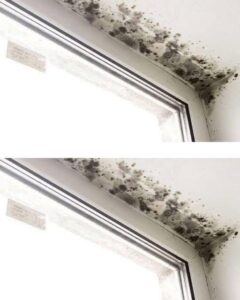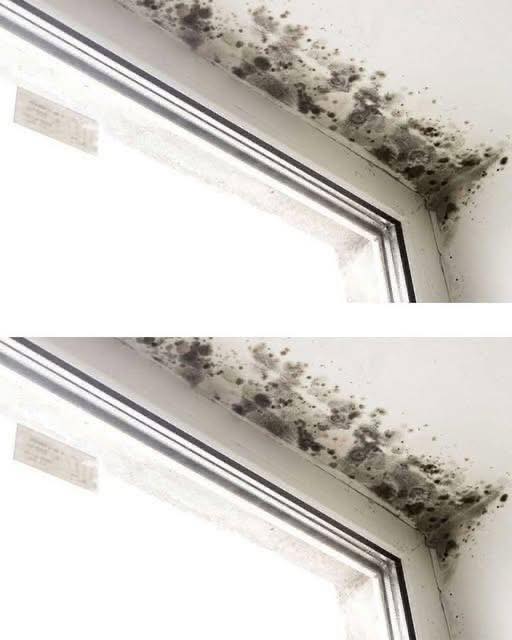Mold creeping along your walls or damp patches forming in corners of your home can seem like minor inconveniences at first—but make no mistake, they’re more than just unsightly stains. Left unchecked, mold and moisture can lead to significant health problems and structural damage in your home. From triggering allergies and respiratory issues to weakening the integrity of your walls and furniture, these seemingly harmless problems can escalate into serious concerns.
While it may be tempting to grab a bottle of strong chemical cleaner to wipe them away, those solutions often contain harsh ingredients that can do more harm than good, especially when used frequently or in poorly ventilated spaces. The good news? You don’t have to compromise your health or the environment to protect your home.
Natural, non-toxic remedies offer an effective, safer alternative for eliminating mold and preventing moisture buildup. These household methods are not only budget-friendly and easy to apply but also help foster a cleaner, healthier living space—especially important if you have children, pets, or sensitivities to chemicals.
In this guide, we’ll walk you through several tried-and-true natural techniques to remove mold and control dampness in your home. These practical tips harness the power of ingredients you likely already have in your pantry, and they can be used regularly without risking your wellbeing or harming the planet.

1. Harness the Power of White Vinegar
White vinegar is a humble yet powerful mold-fighting agent found in nearly every kitchen. Its mild acidity makes it particularly effective at killing over 80% of mold species that commonly grow indoors. Simply fill a spray bottle with distilled white vinegar (you can dilute it with a little water if you prefer), then generously spritz the affected areas. Let the vinegar sit for at least an hour—this gives it time to break down the mold’s structure.
Afterward, scrub the surface with a sponge or brush, rinse with clean water, and dry thoroughly. For stubborn spots, you can apply the vinegar undiluted. Don’t worry about the strong smell—it will fade as the vinegar dries.
Why it works: Vinegar penetrates porous materials and kills mold at the root, not just on the surface. It also helps prevent regrowth, making it a natural long-term solution.
2. Baking Soda — Gentle Yet Effective
Baking soda is another pantry staple with impressive cleaning power. Not only does it help scrub away mold without damaging surfaces, but it also absorbs moisture—an essential factor in stopping mold from returning.
To use, dissolve one teaspoon of baking soda into two cups of water and pour the mixture into a spray bottle. Shake well and spray it on the moldy area. Scrub with a stiff brush or sponge, rinse with water, and spray the solution again. Leave it to air dry—this final step helps prevent mold from coming back.
Bonus tip: You can also make a paste by mixing baking soda with a small amount of water for spot treatment on tougher mold stains.
Why it works: Baking soda is alkaline, which helps break down the structure of mold while neutralizing odors and absorbing excess humidity—two key components in mold prevention.
3. Boost Your Ventilation
Sometimes the best mold prevention strategy doesn’t involve scrubbing at all. Poor air circulation and high humidity are major contributors to mold and damp problems. Improving ventilation in your home—especially in problem areas like bathrooms, kitchens, basements, and laundry rooms—can significantly reduce the risk of mold.
Make it a habit to open windows regularly to let fresh air in and allow trapped moisture to escape. Installing exhaust fans or using portable dehumidifiers can also help control humidity levels. Aim to keep your indoor humidity between 30% and 50% for optimal mold prevention.
4. Essential Oils for Added Strength and Scent
Certain essential oils—such as tea tree oil, clove oil, and lavender—are known for their antifungal properties. Mix a few drops of tea tree oil with a cup of water in a spray bottle and apply it to moldy spots. Let it sit and dry naturally.
Pro tip: Tea tree oil has a strong scent, but it dissipates within a few hours and leaves a clean, refreshing aroma. Plus, it’s gentle on your lungs compared to chemical cleaners.
5. Don’t Ignore Porous Surfaces
While tiles and glass can be wiped clean with ease, mold on porous surfaces like drywall, wood, or fabric can be more challenging. If the damage is minor, natural solutions like vinegar and baking soda may still work, but in cases of deep or extensive mold penetration, removal or replacement of materials might be necessary.
Regular inspection and early action are key. If you spot discoloration, a musty odor, or signs of water damage, treat the area immediately before mold has a chance to spread.
6. Keep It Dry: Prevention Is Better Than Cure
Preventing mold and dampness is easier than dealing with them once they take hold. Take small, consistent steps like wiping down surfaces after use (especially in bathrooms), fixing leaky pipes promptly, insulating cold surfaces to reduce condensation, and ensuring that rainwater drains away from your home’s foundation.
Final Thoughts: A Healthier Home, the Natural Way
Choosing to remove mold and dampness with natural methods is not just a health-conscious decision—it’s a lifestyle shift toward more mindful living. These safe, affordable remedies help you maintain a clean, breathable home without sacrificing your wellbeing or contributing to chemical pollution.
Nature provides powerful tools—sometimes in the simplest forms like vinegar, baking soda, and fresh air. By embracing these eco-friendly alternatives, you’re not just cleaning your walls—you’re creating a space where health, comfort, and peace of mind can thrive.


